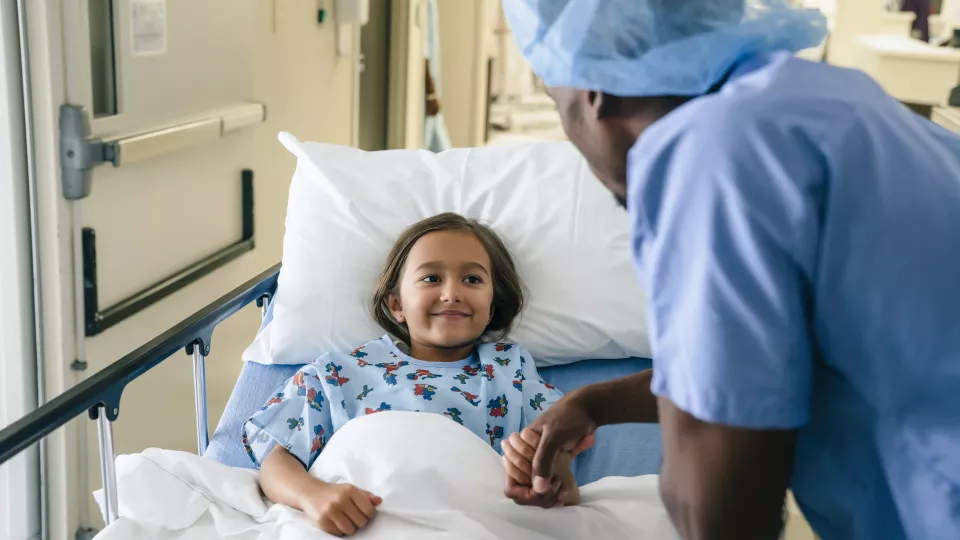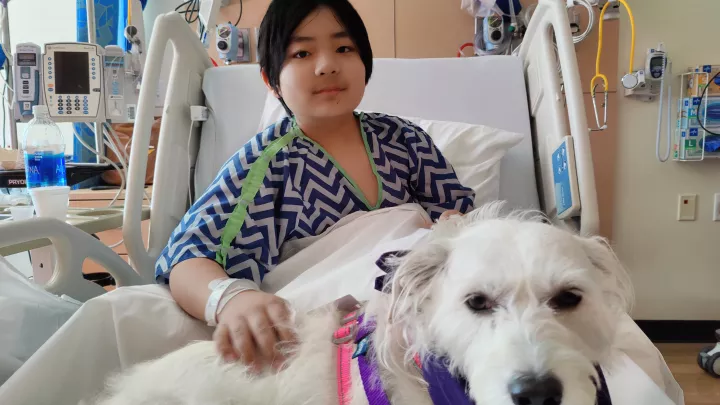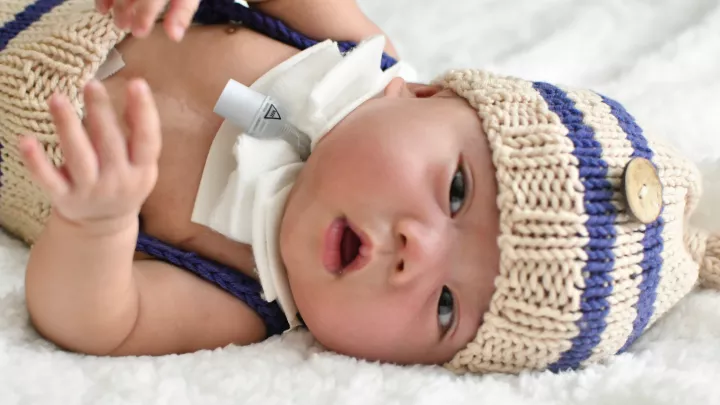
Advanced Endoscopy Procedures Help Kids Avoid Surgeries
In July, Omar Alharbi, MD, MPH, joined Children’s Hospital Los Angeles to lead CHLA’s advanced and therapeutic endoscopy program—one of the most comprehensive programs of its kind in the country.
The minimally invasive procedures—which include endoscopic retrograde cholangiopancreatography (ERCP) and endoscopic ultrasound (EUS)—offer children with a variety of gastrointestinal conditions an alternative to conventional invasive surgeries.
Dr. Alharbi, who previously established and led the Advanced Children’s Endoscopy program at King Fahad Medical City in Saudia Arabia, completed his pediatric gastroenterology fellowship at CHLA and advanced endoscopy training at Cedars-Sinai Medical Center. He shares his insights into these specialized procedures and how they benefit children with biliary obstructions, pancreatitis, gastrointestinal bleeding, gastric perforations, and more.
Why is ERCP important for pediatric patients?
ERCP is an advanced procedure that combines X-ray and an endoscope to help diagnose and treat problems in the liver drainage system (biliary tree), gallbladder, or pancreas. One of the most common reasons we do ERCP in children is for biliary obstructions, where a stone blocks the bile ducts.
Without ERCP, kids might have prolonged jaundice or need to have these stones removed surgically, which is much more invasive and associated with more side effects. We can also use ERCP to treat and diagnose problems in the pancreas.
In recent years, more gastroenterologists have begun offering ERCP for kids, but unfortunately there is still a real lack of trained ERCP providers in pediatrics.
How are you using endoscopic ultrasound to diagnose and treat gastrointestinal problems in kids?
Endoscopic ultrasound, also called EUS, involves performing endoscopy under sedation or anesthesia with a special flexible endoscope that carries an ultrasound probe. This helps provide a detailed examination of the pancreas tissue and the pancreatic ducts to identify the stage of pancreatitis. It also has the capability to obtain pancreatic tissue in certain cases—these can be further examined by a pathologist to identify causes of pancreatitis.
Additionally, if there are complications from pancreatitis such as cyst formation or fluid collections, endoscopic ultrasound can be used to drain and treat those fluid collections. Other uses include diagnosing stones in the biliary tree and obtaining liver biopsies.
Does CHLA provide other therapeutic advanced endoscopy procedures?
We can do many types of interventions to help kids with gastrointestinal problems—from birth all the way to adolescents and young adults. We treat patients with small bowel bleeding that is difficult to control with regular endoscopy. We also treat patients with severe esophageal strictures, large colonic polyps, or perforations.
For example, we had a patient recently who has had a gastric perforation for two months. A surgical repair had been tried, but it kept recurring. Using an endoscopic intervention with special clips, we were able to close this defect in a minimally invasive way. Just a few days later, the child was eating by mouth for the first time in two months and is currently doing well at home.
What do pediatric gastroenterologists and GI surgeons need to know about advanced endoscopy?
The biggest thing they need to know is that it’s available and a viable alternative to certain GI surgeries. There is good data showing that these procedures are safe and can lead to quicker recoveries, less pain, and shorter hospital stays than more invasive interventions.
Many surgeons simply aren’t aware that these procedures are now an option for kids. Endoscopic ultrasound, for example, is widely used in adults, but it’s a much newer technology in pediatrics.
What makes Children’s Hospital Los Angeles an ideal center for these therapies?
The strength of our team is the biggest key. This is not a one-person show. We have highly skilled and experienced endoscopy nurses and technicians, for example, and they play a critical role in the success of these procedures. We also work closely with our excellent gastroenterology colleagues, hospitalists, intensivists, and critical care nurses.
What I love about CHLA is that it’s an incredibly collaborative environment. We work very closely together to bring the best interventions and outcomes for each patient and family.


